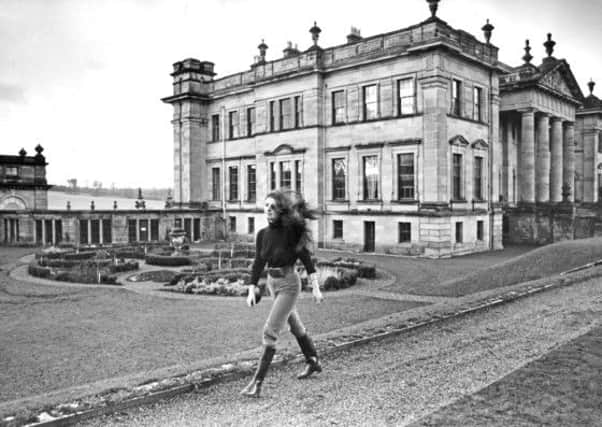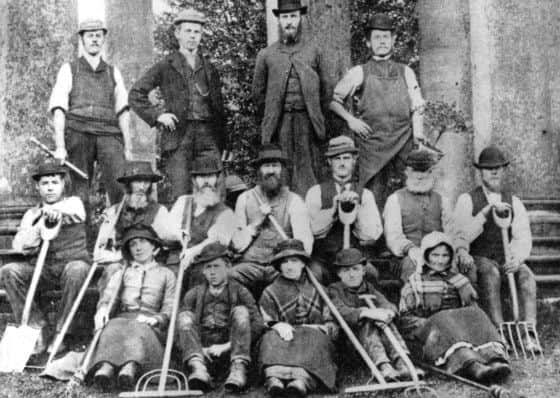Plotting the survival of a stately home


This loss in certain instances came close to a social revolution as the local squire was depended upon to provide large-scale employment, housing and patronage to the local school and church.
The number of demolitions was small prior to the First World War, but had become merciless by 1955, when one house was crashing to the ground every five days. Statistics reveal that since 1900, 1,200 country houses have vanished in England with a frightening proportion of them being in Yorkshire.
Advertisement
Hide AdAdvertisement
Hide AdIdyllic Duncombe Park, overlooking the River Rye and Helmsley Castle, dodged the country house cull and is intact today but only through, some might argue, a rather fortunate sequence of events.


Building the house commenced around 1713 to the designs of gentleman architect William Wakefield with advice from Sir John Vanbrugh (1664 – 1726) who was working at the time on the sumptuous Castle Howard. Duncombe’s dramatic exterior is noted as being ‘typically Vanbrughian’. Flanking service wings were carefully added in 1846 but a raging fire destroyed the interior in 1879. Thankfully, it was rebuilt in 1895.
Duncombe Park saw service as an Army hospital before being leased in the 1920s to St Mary’s School for girls. It seemed set for a permanent institutional fate until Charles Anthony Peter Duncombe, 6th Baron Feversham and his wife, Polly, summoned up immense courage in the 1980s when they decided to reclaim it to its original purpose.
An aesthete yet a practical man, Lord Feversham said: ‘Financially it didn’t make sense before. Then, everything seemed to come together at the right time. There was a break in the school lease and the house was upgraded from Grade II, with two stars, to Grade I.
Advertisement
Hide AdAdvertisement
Hide AdThe Butler report on the economics of historic country houses in 1981 stated that institutions were not the best custodians to run houses like Duncombe and Lord Feversham agreed: ‘Everyone wanted to institutionalise property after the war, but during the mid-seventies, all experts decided it was the worst possible thing and nearly always ended up in the property collapsing.’
English Heritage generously awarded Duncombe a grant which came in very useful as estimated costs for the preliminary conservation work, including re-wiring, roofing, re-plumbing and some decorating amounted to £1m.
Feversham genuinely promised that none of the cash would be squandered on what he described as the ‘conspicuous consumption’ evident at the turn of the 19th century. In short, he had no desire to turn the clock back and emulate the opulent lifestyle of the Victorian and Edwardian Fevershams.
For some months after moving back to Duncombe, the Fevershams had no choice but to live modestly as they had to start by ‘camping out’ as Lady Feversham described it, in the attics, while work went on in the principal rooms downstairs.
Advertisement
Hide AdAdvertisement
Hide Ad‘There were moments when I would wake up in the middle of the night and think ‘’what have we let ourselves in for,’’ but that was before we started. Once the work was underway we felt much happier,’ she revealed.
By the early 1970s the demolition of Britain’s great country houses had slowed down. A reminder of what had been lost was highlighted in 1975 when the Victoria & Albert Museum staged a massive exhibition The Destruction of the English Country House, which also toured the provinces.
Subsequent years saw hundreds of Britain’s country houses become user friendly and open two or three days a week to those eager to see the rooms which a few years earlier their ancestors had cleaned.
Duncombe has followed this trend and annually, hosts spectacular outdoor events, from steam fairs to craft shows and from falcon displays, to family dog shows.
Advertisement
Hide AdAdvertisement
Hide AdThe early 18th century green gardens of 35 acres (14 ha) have been described as the supreme masterpiece of the art of the landscape gardener. A sundial on a decorative urn is held by the winged figure of Old Father Time in the grounds. The sculpture is attributed to Van Nost, c. 1715.
Whilst the house closed to the public in 2011, the spectacular gardens remain open to visitors. In 2012, Duncombe Park was used in filming the period drama TV mini-series Paradise as the fictional Groby Hall.